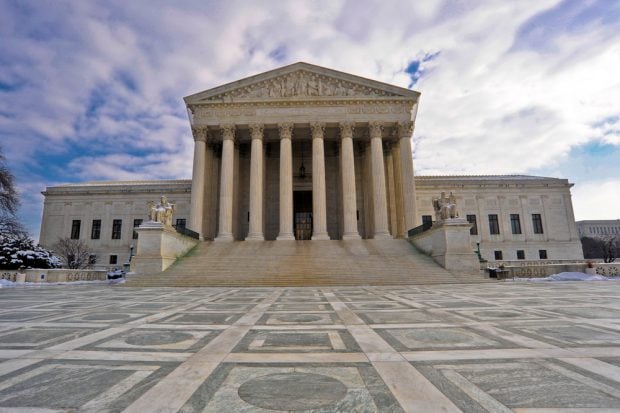The Temporary Corporate Credit Union Stabilization Fund turned aprofit in 2011, improving the fund's net position from 2010,according to audited financial statements released Friday by theNCUA.
|The agency also said it has received a clean report from itsoutside auditor.
|The TCCUSF ended the year with a nearly $2 billion net income,primarily due to revenue from assessments on natural person credit unions that equaled $1.956billion.
|Guaranteed notes generated $82.6 million in fees. Expenses totaled $111 million, including administrativeexpenses totaling $8.2 million, a $3.5 million increase over 2010,the agency said.
|The net gain improved the stabilization fund's net position to-$5.25 billion, compared to -$7.46 billion as of Dec. 31, 2010, theNCUA said.
|The stabilization fund's assets increased during 2011 to $1.2billion, up from $377 million as of year-end 2011.
|Much of the increase is due to $627 million in receivables fromAsset Management Estates, which include the assets and liabilitiesof liquidated corporates. The net receivables represent $5.6billion in gross receivables, less a $5 billion allowance forlosses, the NCUA said.
|A $279 million distribution receivable from the NCUSIF alsoinflated assets. Distribution from the share insurance fundis required to equal the maximum amount possible that does notreduce the fund's equity ratio below 1.3% and available assetsbelow 1.0%.
|The outstanding principal balance of NCUA Guaranteed Notes was$24.7 billion as of year-end 2011, and represents the maximumpotential future guarantee payments the NCUA could be required tomake, not considering any possible recoveries, the agency said.
|That amount is an increase from 2010's year-end balance of $17.3billion, due to eight re-securitizations in 2011 with net proceedsof $10.6 billion.
|The majority of these proceeds were used to repay promissorynotes owed by the Asset Management Estates to the surviving BridgeCorporates. As of 2011 year-end, the aggregate outstanding amountof the promissory notes was $0, reduced from $18.2 billion as ofDec. 31, 2010, the agency said.
|Total Legacy Assets collateralizing the 13 guaranteed notes havean aggregate unpaid balance of $34.3 billion, with a recovery valueof $24.5 billion, as of Dec. 31, 2011. Credit ratings on thesecurities included in Legacy Assets fell during 2011.
|The majority of legacy assets, 79% of unpaid principal balances,are residential mortgage backed securities. The percentage of RMBSbelow investment grade as of year-end 2011 was 88%, compared to73% as of year-end 2010.
|Recovery value estimations are dependent upon unknowns such ashousing prices, the report said. Guaranteed note expected netlosses recognized on the Stabilization Fund's balance sheet as ofDec. 31, 2011 were zero; however, changed assumptions regarding thedecline of housing prices could result in estimated losses as highas $1.3 billion.
|KPMG LLP, the independent firm that audits the StabilizationFund's books, issued an unqualified audit opinion with noreportable findings.
|“For the second year in a row, NCUA has received a clean auditopinion for the Stabilization Fund from our independent auditor,”said NCUA Board Chairman Debbie Matz.
|“As a regulator of financial institutions, NCUA is committed toproducing financial reports of the highest quality year after yearfor each of our funds. KPMG's determination that we achieved thisstandard for the Stabilization Fund in 2011 is, therefore, verywelcome news,” Matz said.
|In the 2010 audit, the NCUA and the Stabilization Fund werefound to have a “significant deficiency” resulting from a “lack ofsufficient preparation of the accounting and reporting of theCorporate System Resolution Program.” According to KPMG, the statusof that finding is now closed.
|In its release, the NCUA said it has continued to strengthen thesystems needed to handle the Stabilization Fund's many complextransactions, including those related to the NCUA GuaranteedNotes.
|The NCUA reported it had also improved its internal controlenvironment, which allowed the 2011 audited financial statements tobe completed six months earlier than the 2010 statements.
|The Stabilization Fund's 2011 audited financial statements areavailable on the NCUA's website.
|Complete your profile to continue reading and get FREE access to CUTimes.com, part of your ALM digital membership.
Your access to unlimited CUTimes.com content isn’t changing.
Once you are an ALM digital member, you’ll receive:
- Critical CUTimes.com information including comprehensive product and service provider listings via the Marketplace Directory, CU Careers, resources from industry leaders, webcasts, and breaking news, analysis and more with our informative Newsletters.
- Exclusive discounts on ALM and CU Times events.
- Access to other award-winning ALM websites including Law.com and GlobeSt.com.
Already have an account? Sign In
© 2024 ALM Global, LLC, All Rights Reserved. Request academic re-use from www.copyright.com. All other uses, submit a request to [email protected]. For more information visit Asset & Logo Licensing.









